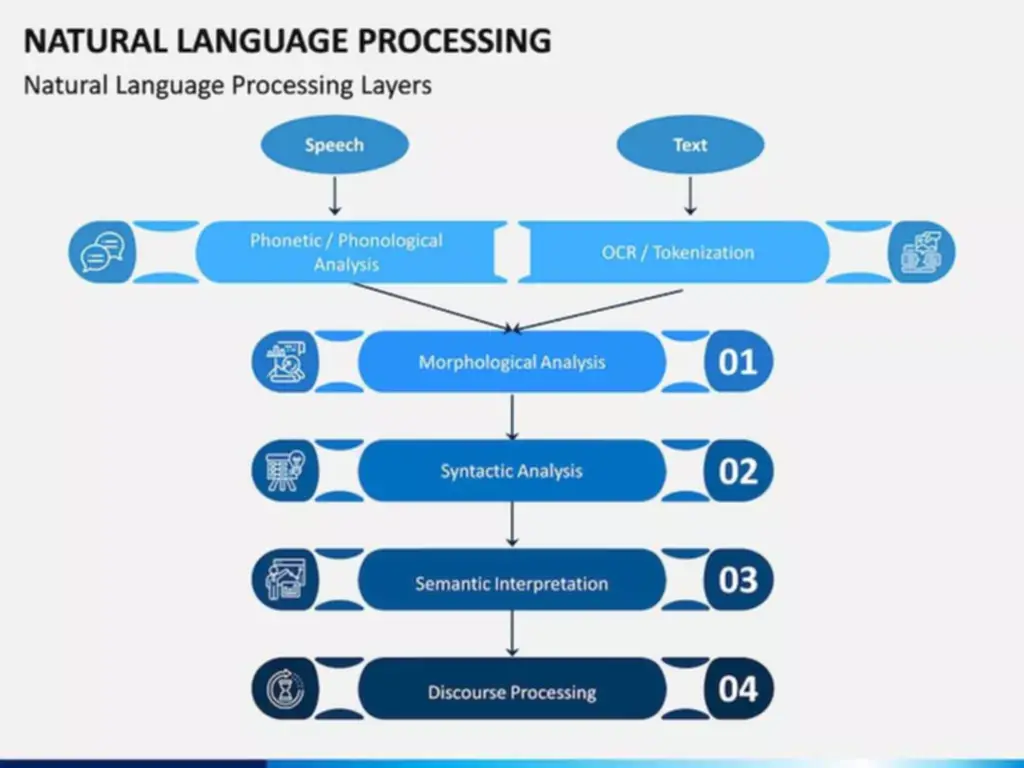What’s Sast And The Way Does Static Code Analysis Work?
As compared to guide https://www.globalcloudteam.com/ testing, static analysis instruments can also improve the pace of application testing. Test automation instruments can detect defects (or problems) in software program code early in the growth part. Static evaluation tools can also pinpoint the precise location of the software program bug, thus enabling sooner resolution. Moreover, with early detection of minor points in the SDLC, it takes much less testing time and effort to fix them (before they grow into crucial bugs).
How Firms Benefit From Utilizing Each Static Code Evaluation And Fuzz Testing
Some programming languages corresponding to Perl and Ruby have Taint Checkingbuilt into them and enabled in certain situations corresponding to accepting datavia CGI. Data move static analysis meaning evaluation is used to collect run-time (dynamic) informationabout knowledge in software while it’s in a static state (Wögerer, 2005). At the identical time, 72% of producing corporations and 53% of healthcare companies have been adopting static evaluation.
- This automated device focuses on code fashion and formatting by checking your code against predefined guidelines, conventions, and finest practices.
- According to a research by the National Institute of Standards and Technology (NIST), the cost of fixing a defect increases significantly as it progresses by way of the development cycle.
- This report consists of recognized points, their severity, and infrequently a couple of recommendations to assist clear up them.
Static Testing: What You Need To Know
Most tools let you customize settings and parameters, in addition to select rules, standards, and metrics to apply to the code. After operating the software, you should analyze the issues detected and verify their validity, severity, and influence. You should also communicate and document the results and the actions taken or deliberate. Using a couple of device can also complement one another and canopy completely different elements of the code. Developers and testers can run static evaluation on partially complete code, libraries, and third-party supply code.
Why Should We Carry Out Static Testing?
So, if you’re in a regulated industry that requires a coding commonplace, you’ll want to make certain your tool helps that normal. The huge difference is the place they find defects in the improvement lifecycle. The cloud choice offers quick time-to-value and reduced infrastructure costs, whereas the on-premises option permits users to lock down and course of samples solely within their surroundings. The process is time-consuming and sophisticated and can’t be performed effectively without automated tools. The evaluation is done to find any structural defects that might lead to errors when the program runs. There are also different helpful instruments you must use for static analysis and testing.
Organising Guidelines And Standards:
The most typical dynamic evaluation practice is executing Unit Tests towards the code to search out any errors in code. In distinction to Static Analysis, the place code is not executed, dynamic evaluation is based mostly on the system execution, typically utilizing instruments. An automotive company using static evaluation detects 32% of vulnerabilities solely through fuzz testing. Download a free white paper to be taught the details, or guide a demo to see fuzz testing in motion. At this stage, checking and eliminating any false positives is necessary.
Why Is Sast An Important Security Activity?
Static code analysis also helps DevOps by creating an automatic feedback loop. Developers will know early on if there are any issues in their code. Static evaluation is usually used to adjust to coding guidelines — such as MISRA.
Increase Code High Quality & Scale Back The Value Of Defects
Static evaluation is a vital technique for ensuring reliability, safety, and maintainability of software purposes. It helps builders identify and repair issues early, improve code quality, enhance security, ensure compliance, and enhance efficiency. Using static evaluation instruments, developers can build better high quality software program, reduce the chance of security breaches, and decrease the effort and time spend debugging and fixing points. Discover some great advantages of integrating static code evaluation tools into your software program testing process. Learn how these instruments can identify bugs, vulnerabilities, and potential efficiency points early in the improvement cycle, in the end saving time and resources. Static evaluation, also referred to as static code evaluation, is a technique of computer program debugging that’s carried out by analyzing the code without executing the program.
How To Choose A Static Code Analyzer
Software engineering teams use static evaluation to detect points as early as potential in the growth course of, so they can proactively determine crucial points and stop them from being pushed into production. Static evaluation tools may be succesful of quickly spotlight potential safety vulnerabilities in code. By detecting and fixing errors, bugs, vulnerabilities, and code smells before they cause problems in the production surroundings, these strategies can stop or reduce rework, debugging, and troubleshooting. Additionally, they provide suggestions, recommendations, and best practices for the code to assist optimize, refactor, and enhance the code structure, design, and logic. Ultimately, these techniques ensure that the code meets expectations, necessities, and standards of the software program project. Static software security testing (SAST) or static code evaluation tools determine certain types of bugs and vulnerabilities in software by analyzing the source code with out executing the program.
Typically, this can be customized to swimsuit your preferences and priorities. It can also detect security issues by stating paths that bypass security-critical code corresponding to code for authentication or encryption. Security groups are more effective and sooner to reply because of Falcon Sandbox’s easy-to-understand reviews, actionable IOCs and seamless integration. The free version with partial performance of SourceMeter may be accessible for all programming languages. We can use the totally different instruments to perform the code’s analysis and evaluation of the identical. Static testing additionally helps us to determine these errors which may not be found by Dynamic Testing.
Some different techniques used while performing static testing embody use case requirements validation, functional necessities validation, architecture evaluate and subject dictionary validation. It is a big platform that focuses on implementing static evaluation in a DevOps environment. It features as much as four,000 up to date guidelines primarily based round 25 security requirements. Another Static Testing method is static analysis, which is used to comprise the assessment of the code quality, which is established by developers. We must carry out the static testing on the software product because dynamic testing is costlier than static testing. Involving the test circumstances is pricey in dynamic testing as the test circumstances have been created in the initial phases.
By shifting left, builders can catch points earlier than they turn into issues, thereby reducing the quantity of time and effort required for debugging and upkeep. This is particularly important in agile improvement, where frequent code modifications and updates can lead to many points that need to be addressed. Static analysis ensures fewer defects throughout unit testing, and dynamic evaluation catches points your static evaluation tools might need missed. To achieve the highest potential level of test protection, mix the two methods. Static code evaluation, or static analysis, is a software program verification activity that analyzes supply code for high quality, reliability, and security with out executing the code.
For example, a transaction may appear to proceed accurately to a consumer, tester, or check execution tool when, in reality, a component has thrown an unhandled exception and did not process it correctly. A management system may reply shortly and appropriately beneath test for 3 days however might be leaking memory and heading for a crash on day four in production. While the record of cons would possibly look intimidating, the holes of static evaluation can be patched with two things. This additionally signifies that each method presents completely different advantages at totally different stages of the development course of. Security groups can use the CrowdStrike Falcon® Sandbox to know subtle malware assaults and strengthen their defenses.
That’s why growth groups are utilizing the best static code evaluation instruments / supply code evaluation instruments for the job. Here, we talk about static analysis and the benefits of using static code analyzers, in addition to the limitations of static analysis. Static analysis is the process of analyzing the source code of a software program project with out executing it. It can be carried out by utilizing tools that scan the code and check for syntax errors, coding requirements, potential bugs, security vulnerabilities, and different quality points.
Ios Developer Resume Examples For 2024
Your resume template should encompass contact data, resume summary ios developer resume, work experience, technical expertise, and training. Let’s check out what you must include in every part. The part work experience is an important part of your ios developer resume. It’s the one thing the recruiter really cares about and pays probably the most consideration to.This section, nevertheless, isn’t just a listing of your earlier ios developer duties. An iOS developer focuses on creating and sustaining purposes for Apple’s iOS platform. Highlight your expertise with Swift and Objective-C, familiarity with Apple’s improvement tools, and any successful tasks you’ve got accomplished.
Get Noticed With Resume Templates That Beat The Ats
Look to brush up your expertise on the most typical database choices for iOS apps. The best way to gauge that is by looking at the average iOS developer salary as a end result of how much corporations are willing to pay is a huge indication of demand versus provide. Our content writing companies and professional writers might help you create any sort of content you need. The major guidelines to remember whereas writing the resume abilities part are as follows.
Create The Right Job Description And Expertise Sections On Your Ios Developer Resume
That’s why it’s understandably difficult for model spanking new graduates or those that have no to minimal coding experience to get hired! Start doing mini initiatives for small shoppers until your core abilities turn into stronger and your client pool turns into larger. And oh, don’t forget to put your body of work on Github so you possibly can let that coding excellence shine forth. An experienced specialist in iOS improvement, extremely skilled, organized, and motivated.
Specialist Ios Developer, Machine Studying Integration Resume Pattern
I used to build web sites as nicely, but moved on to apps as a outcome of „cellular is consuming the world“. I’ve accomplished tasks for a lot of small clients and startups as well as greater players like Present Plus and Booking.com. Your iOS Developer resume ought to include a profile, skilled experience, tasks, schooling, and iOS growth abilities. If you’ve been working within the area for a while, think about placing your work experience first. Your practical skills and experience might be more relevant to employers.
Remember, hiring systems typically scan for specific keywords, and having a devoted abilities space helps you move through these filters effectively. The abilities section of your iOS developer resume is a crucial part that may make or break your possibilities of touchdown an interview. Hiring managers and recruiters use Applicant Tracking Systems (ATS) to filter resumes primarily based on specific keywords and abilities they anticipate candidates to have.
If your resume is just too long, poorly designed, or sloppily formatted, you’re giving the recruiter a purpose to skip your resume. It will list the skills that the recruiter is going to be looking for. Make a listing of these abilities, examine which you may have, and make sure to include them in your resume. BrainStation’s iOS Developer career information is intended that can assist you take the first steps towards a profitable career in iOS growth. Read on to be taught more tips on how to create a great iOS Developer resume.
Use the official diploma name, and think about including a coursework or projects part to highlight what you realized. As an entry-level candidate, your schooling section should not simply record your degree. Add relevant coursework, projects, and achievements to indicate you’ve the abilities wanted for the job. When describing your work expertise, use strong action verbs that are specific to iOS development. You’ll need your summary to create an enduring impression, intriguing employers enough to proceed reading your resume.
Always check what formats are supported earlier than sending, and ensure to submit an ATS resume. Formatting your resume should be the last step of the design course of. Focus on producing efficient content material first and then polish your resume after. When you search via the App Store and see a subpar app icon, you’ll most probably maintain scrolling to find a more reliable app. This type of resume is nice and simple to make – Charlie just used a Microsoft Word template. An indicator of your skill in growth is how you can improve the productiveness of an app, make it more satisfying for consumers to use, or make it more environment friendly to use.
They’re based mostly on learnings from serving to over 100,000 job seekers create a resume (like the examples above) with Standard Resume. Highly skilled and collaborative iOS Developer with [#] years of expertise in [area of expertise]. Previous work consists of [apps developed] that [major iOS growth achievements]. Industry leaders all the time ensure that their resume expertise section offers an enticing glimpse at their experience, whereas telling a career narrative. Explore these pattern iOS developer resumes on how to best create your resume expertise part. As a hiring manager, I need to see the way you fit the function of an iOS developer.
If the corporate is on the lookout for somebody with expertise in developing apps for iOS 14, showcase any relevant tasks you have labored on. The technical skills part might be an inventory of the technical skills you’ve essentially the most experience with. This ought to be a mix of programming languages, UX skills, growth frameworks, and APIs.
- They present that you understand the instruments wanted for the job of making and fixing iOS apps.
- Include any apps you’ve developed, both independently and collaboratively, along with a brief description of each project.
- Remember, clear and to the point is better than lengthy and detailed.
Since Apple has been shifting ahead with Swift, it’s a safe guess to begin studying Swift instead of Objective-C as an iOS developer. Apple comes out with new frameworks and variations of Xcode and Swift yearly. Writing a resume for the primary time seems like combating with a dragon. Nonetheless, think of the format and construction, and every thing shall be nice.
Next, the work expertise section will provide additional element on your earlier tasks. This is your alternative to impress recruiters and shut the deal. A hiring supervisor recruiting for a JavaScript developer wish to see experience that pertains particularly to the language. When detailing your work expertise, give consideration to such projects and contributions that demonstrate your mastery of JavaScript.
Ai Improvement Providers Artificial Intelligence Software Program Growth Firm
With NLP options, you’ll have the ability to spot emerging tendencies, acquire valuable insights and run predictive analytics to make smarter enterprise selections. Use instances for NLP are huge, including software program for text summarization and social media sentiment evaluation AI in automotive industry, chatbots and virtual agents, spam detection instruments, machine translation solutions and far more. To select the right machine studying growth companies, consider the provider’s expertise, experience, and technology stack. Look for a corporation specializing in machine studying with a confirmed monitor report.
Inoxoft’s Full-service Ai Solution Growth Process

Leverage edge AI on smart devices to make sure data security and privateness, energy real-time analytics and enhance responsiveness. We’ll allow you to ensure high infrastructure performance, reduce mannequin coaching time and reduce decision delay. Elevate your model’s presence available on the market custom machine learning and ai solutions with our expertise in mobile app improvement companies. Detect fraudulent transactions in real-time with our AI and ML improvement services, defending your monetary establishment from losses.
Content Moderation & Filtering Systems

Automate document generation as per specific requests and deal with your paperwork extra efficiently. The mannequin undergoes rigorous quality evaluation and bias checks before we fine-tune it to attain the desired degree of accuracy and efficiency. We design a mannequin architecture and create a prototype to establish baseline performance. We gather and prepare a high-quality, diverse dataset for model training and address biases that may influence your model’s conduct. Our AI consulting firm prioritizes transparency by brazenly sharing project progress and addressing potential points. We value input from stakeholders at each stage and remain committed to honesty and open communication throughout the method.
Dashcam App Improvement For Nexar
This opens up opportunities to seamlessly hook up with analytics, alerting, and the ML dataset generation process. We design and refine tailor-made ML/AI algorithms to deal with your small business needs and aims exactly. A pc vision solution that enables detecting every player with high accuracy, eliminates a ball from hairless customers and gathers correct stats over each player’s success. Increase the efficiency of forecasting, decision-making, and different essential operations. Automate the decision-making routine and forecast occasions with probabilistic evaluation and consumer personalization. Extract needed data from scanned paperwork and mechanically fill relevant fields primarily based on the information from the database.
Our group ensures seamless integration for long-term development and profitability. Having constructed and empowered groups for organizations that developed from startups to industry leaders in banking, entertainment, and schooling, we’re able to deliver the identical expertise to your business. We assist businesses expand their AI capabilities with a tailor-made method and a powerful monitor report across all areas of AI. Struggling to choose between Shopify, Magento, WooCommerce, or building a customized website? Discover the professionals, cons, and best use circumstances for each platform — every little thing you have to make the best decision for your unique enterprise wants. This is the only guide you may ever want to choose the proper website answer.
With AWS Certification, we guarantee top-tier cloud experience, enabling us to architect robust, scalable, and secure solutions. 5) ML determines various nuances in information bettering the precision of economic models. Over the previous 12 years, our teams have contributed to the creation of over 250 revolutionary digital products for manufacturers similar to Warner, Dolby, Skyscanner and TUI. Leverage laptop vision to automate tasks like content moderation and client identification verification. Operations optimization, predictive maintenance, power forecasting, anomaly detection and renewable energy integration for the optimum energy utilization.
This will let you detect and flag suspicious consumer behaviour or asset misuse and successfully determine fraud. Our information scientists are experienced in AI development and deep learning techniques. They can construct neural networks of each sort, including supervised, semi-supervised, unsupervised, energetic, and reinforcement networks. The utility of huge information and predictive analytics for real-time analysis of network points and safety concerns, processing cellular use for higher customer experience and custom options for advertising agility.
- Maximize the utilization of unstructured data by way of natural language processing (NLP) functions such as sentiment evaluation, summarization, translation, and question response.
- Discover how we developed an AI-powered chatbot that assists customers by providing tailor-made recommendations for treatments, diagnostics, and healthcare supplier decisions.
- Adjust to market fluctuations with out losing your profit with our forecasting algorithms.
- Our AI development experts work carefully with you to seamlessly combine AI solutions into your existing techniques and workflows.
- That’s why we think about fully greedy your needs and targets earlier than proposing options.
For virtually 10 years now, I’ve loved working with COAX Software on numerous initiatives. Their group of highly-talented, cross-functional software engineers and architects helps us meet development timelines rapidly and reliably. We curate high-quality, related data from various sources, including databases, sensors, APIs, and net scraping. The collected knowledge undergoes rigorous processing, cleansing, and transformation to make sure its suitability for coaching AI fashions. Our sturdy technical expertise in a wide range of AI frameworks, tools and algorithms allows us to deliver probably the most advanced solutions smoothly. We additionally keep on high of the latest research in AI/ML so that we are in a position to deliver state-of-the-art, reliable and efficient solutions to our clients.
Integrate machine studying algorithms in production traces to optimize your high quality administration with our AI development options. Leverage real-time analysis visual data analysis performed by superior ML & DL algorithms tailor-made to your wants. Retrieve useful insights from photographs and movies using our pc imaginative and prescient providers for object recognition, detection, and monitoring. We’ll combine one of the best hardware components for correct and high-quality picture resolution. More corporations are investing in AI options to outperform their competitors and make their companies future-proof. We’ll allow you to adopt clever security options based on AI and machine studying algorithms powered by laptop imaginative and prescient.
Maximize the use of unstructured information by way of natural language processing (NLP) applications similar to sentiment analysis, summarization, translation, and question response. We provide complete end-to-end synthetic intelligence development companies. From strategy and consulting to knowledge collection, model coaching, deployment, and upkeep, we guide you thru the whole process, making certain a seamless and profitable implementation of AI options.
Increase your income by optimizing operations and expenses, bettering customer satisfaction with personalised experiences, conducting efficient advertising, and extra. SPD Technology has done an excellent job of maintaining the lifeblood of their codes. Responsibility and a commitment long-term partnership are two hallmarks of their work. Then, you can review knowledge to change your corporation methods related to variables of the habits of the purchasers.
For the last thirteen years, SPD Technology has helped us scale product growth and continuously ship the product functionality our clients must make smarter selections. We guarantee clean, well-documented code and consider refactoring an important part of every app improvement lifecycle, preserving your project scalable and future-proof. Customise language models with curated information to generate high-quality text, pictures, videos, or code in seconds – completely tailored to your business needs. AI automation frees up useful sources for innovation and market growth. Leverage AI-driven analytics to create personalised products, enhance cross-selling strategies, and unlock new revenue alternatives. Resource allocation optimization, high quality management enhancement, processes streamlining and total efficiency enchancment to extend business productivity.
Integrate exercise monitoring algorithms into IoT sensors and wearables to monitor user’s state in actual time. Provide clients with accurate wellness metrics, verify employees’ bodily actions, and monitor patient well being with customized AI options developed by our AI consultants. Our clients’ specific wants and requirements form every considered one of our AI development tasks. This means, you’ll be ready to partner with an skilled AI improvement firm and thorough QA staff without the need to change or sacrifice anything.
COAX’s team is second to none designing, creating, and deploying websites. I highly recommend COAX to anybody in search of a reliable and proficient internet development team. We help in integrating AI solutions into your existing systems, making certain they work well together with your data and different technologies while being scalable and performing efficiently.
Transform Your Business With AI Software Development Solutions https://www.globalcloudteam.com/ — be successful, be the first!
Asp Internet Core Fundamentals Step By Step
The WebHostBuilder() name is responsible to create a number, which begins the Server for ASP.NET Core Application. Sam Basu dives into what the DevReach conference what is asp.net supplied for the latest in .NET growth, and shares links to each of the breakout sessions recorded in full HD. Classic ASP pages have the file extension .asp and are normally written in VBScript.

Ideas On “aspInternet Core Tutorials For Novices And Professionals”
- Other features are offered as NuGet Packages, which you will have the ability to add to your software as needed.
- These codes can use the whole hierarchy of lessons in .Net framework.
- Startup.cs file has launched to serve the finest way; the Global.asax file works to deal with Application level events in an ASP.NET Application.
- It consists of the core features required to run a basic .NET Core app.
- Therefore, every ASP.NET web page is an object and all its components i.e., the server-side controls are additionally objects.
- Classic ASP pages have the file extension .asp and are normally written in VBScript.
In addition to everything mentioned above, ASP.NET also helps cut down costs. Back in the day, improvement corporations had to pay for expensive software program in order to construct applications. The primary difference between compiled and interpreted code lies in its execution.
AspWeb Core Mvc – Fluent Api Validation
It was developed by Microsoft to allow programmers to build dynamic websites, functions and companies. The name stands for Active Server Pages Network Enabled Technologies. ASP.NET purposes are compiled codes, written using the extensible and reusable elements or objects current in .Net framework. These codes can use the entire hierarchy of courses in .Net framework. Since the 2016’s ASP.NET Core release that made it potential for users to host ASP.

What Kind Of Experience Do You Wish To Share?
It offers entry to information sources like SQL server, OLE DB, XML etc. The ADO.NET allows connection to knowledge sources for retrieving, manipulating, and updating information. Classes, interfaces, buildings, and enumerated values, that are collectively known as types. This app can also be downloaded for free for non-corporate utilization. In today’s world, nearly any sort of code can be written with the help of free software. Within this framework, developers can separate the design from the code, which makes it easier for them to take care of the ASP.NET app.
AspInternet Core – Introduction & Surroundings Setup
NET functions on Linux, macOS, and Windows as properly (in addition to the usual IIS), the general server value has additionally been significantly reduce right down to size. Today, handling severe dev projects on ASP.NET is a fairly cheap process from a financial viewpoint, too. Websites and apps constructed with ASP.NET have the potential to be lots sooner and more efficient than web sites and apps built with PHP and JavaScript, for example. ASP.NET apps are compiled, which in layman’s phrases means the code is translated into object code, which is then executed. After compilation is finished, the code could be executed over and over by the Dot Net platform in almost no time.
If you go along with ASP.NET Core Web Application template, Views folder routinely will be created for you. If you want it, you’ll have the ability to delete Views folder and few different folders, which are not required by you. If you go along with ASP.NET Core Web API template, Views folder is not going to be created for you. If you need it, you’ll find a way to create Views folder and subsequently you need to use the project as ASP.NET Core MVC in addition to Web API project. This project sort is for ASP.NET Core Application cross-site platform. ASP.NET Core is an open supply cross platform framework to construct trendy Cloud primarily based Applications.
To change the default bower set up location, double click on .bowerrc file and alter the target listing location on every adds or updates. Step 1Add the piece of code given below in Startup.cs class’s constructor improvement setting mode. Like Trace.axd file to hint the every request in an old .NET framework, in an ASP.NET Core Application, Application Insights does the identical job of Trace.axd file.
We can develop and run ASP.NET Core Applications cross platforms on Windows, Mac and Linux. Because ASP.NET code is executed on the server, youcannot view the code in your browser. These are key options launched in each version of .NET Core and the subsequent unified .NET platform. It’s important to notice that the .NET ecosystem continues to evolve, with new features and improvements regularly added in subsequent versions beyond .NET 6.
Odd-numbered releases are STS releases with free support and patches for 18 months. Tutorials Point is a number one Ed Tech company striving to supply the best learning materials on technical and non-technical subjects. It imparts data querying capabilities to .Net languages using a syntax which is similar to the tradition question language SQL. This way, the server becomes aware of the overall application state and operates in a two-tiered connected means. Items are chosen from a page, say the gadgets page, and the total collected objects and price are proven on a different web page, say the cart page.
UseContentRoot(Directory.GetCurrentDirectory()) methodology name refers folder as the Application’s content material root. It is , which is a useful resource folder, the place you’ll be able to place all of your static(.html) and dynamic recordsdata which may be obtainable throughout the world. It contains the core features required to run a primary .NET Core app. Other features are supplied as NuGet Packages, which you can add to your application as wanted. In this fashion, the .NET Core application accelerates performance, reduces the reminiscence footprint, and becomes easy to maintain.
Note that like Global.asax events, the Startup.cs constructor, ConfigureServices() and Configure() are known as only once when the Application hundreds first. For the following requests, the configuration of the Services and middleware won’t load again because the host has already began and loaded it. Thus the next requests will be taken immediately, which are passed via the middleware chain. When the Application runs, the UseDefaultFiles() method will search for the Application’s default file is shown below.
ASP.NET is an open-source, server-side net application framework. It was created by Microsoft firstly of the century and it runs on Windows. ASP.NET makes it possible for developers to create web applications, net providers, and dynamic content-driven websites. It is used for creating solutions primarily based on HTML5, CSS, and JavaScript which might be simple, fast, and might scale to lots and many customers. ASP.NET is a web utility framework designed and developed by Microsoft. ASP.NET is open supply and a subset of the .NET Framework and successor of the basic ASP(Active Server Pages).
With model 1.zero of the .NET Framework, it was first released in January 2002. So a query comes to thoughts that which technology we had been using before the yr 2002 for creating web purposes and services? There are also some other technology like Java, PHP, Perl, Ruby on Rails, and so on. which can be utilized to develop web purposes. The work of IIS is to provide the net application’s generated HTML code end result to the consumer browser which initiates the request as proven in the under diagram. ASP.NET is constructed on the CLR(Common Language Runtime) which allows the programmers to execute its code utilizing any .NET language(C#, VB etc.). ASP.NET is a server-side web-application framework designed for internet improvement to supply dynamic web pages.
Transform Your Business With AI Software Development Solutions https://www.globalcloudteam.com/ — be successful, be the first!
30 Finest Javascript Project Ideas For You 3 Bonus Portfolio Projects
Sign up now to get my free information to teach your self the method to code from scratch. If you have an interest in learning tech skills, the following tips are good for getting began sooner. If you wish to earn cash freelancing, you’ll be able to build a portfolio website to showcase your initiatives. Use a quiz on the positioning to help potential clients discover the right companies for his or her problems, for instance. I was an enormous fan of drawing my very own maze games when I was a child in the early ’90s. Therefore, studying the way to code my own maze with JavaScript was so much enjoyable.
High Javascript Project Concepts For Consultants
Because Angular is a extra complex concept, I’ve saved most of those tutorials on the less complicated side of issues. Maybe I’m hungry as I write this because this is the first of several food-based tutorials we’re going to be taking a glance at. Don’t really feel dangerous if you don’t perceive at first, each developer has been there. And do not hand over, all the time apply and apply, until you get it all right!
- Whether you are wanting to create real-time updates, interactive maps, or immersive animations, JavaScript is the key to bringing advanced options to life on net pages.
- There are so many alternative frameworks you ought to use that do very similar or overlapping issues in JavaScript.
- Hone your skills in methods like flexbox, transitions, and hover results to create a visually beautiful and user-friendly project.
- To test your understanding of the ideas behind the Tic-Tac-Toe recreation, your bonus challenge is that this hangman sport.
- I’m now stepping into some extra complex ideas that not solely increase your expertise, but start to get into duties you may be responsible for at an precise JavaScript job.
Greatest Javascript Project Ideas For Newbies
Start small and create a single listing the place you possibly can merely add and delete items. Hence, the key is to start small and set realistic expectations on your studying path. The last thing you want is to begin with an ambitious project and find yourself feeling frustrated whenever you get stuck. Your time is restricted, so that you need to build JavaScript apply projects that are not too straightforward.
How To Create Seven Traditional Video Games With Ania Kubow
By examining the JavaScript and CSS code, you may learn to whip up your own theme switcher and apply unique styling based on user preferences. It’s additionally the perfect playground to learn about occasion listeners, DOM manipulation, and essential programming ideas like capabilities, objects, and conditional statements. This project is a good jumping-in level for novices who want to study more superior features. It’s constructed using HTML, CSS, and JavaScript, and it’s a wonderful project for novices to study and practice their expertise.
One thought for a programming project is to create a card matching sport. This kind of recreation entails flipping over playing cards to disclose their hidden images and then trying to find an identical pair by flipping over additional cards. Taking any of these initiatives a step additional by customizing them and making them your own ultimately is the true trick to actually learning JavaScript. This simple but partaking game is created using HTML, CSS, and JavaScript to create a grid of playing cards with matching icons. Get ready to learn something new and fun with this Color Palette Generator project! This code will educate you a ton of priceless ideas whereas allowing you to create incredible colour palettes on the fly.
You’ll choose up lots of ideas in this tutorial like for loops, change statements, and OOP ideas. A framework is principally a prepackaged chunk of code that does something particular. Frameworks rise and fall in popularity.They’re positively worth understanding about, but I wanted to start with some vanilla, easy initiatives. Here the participant has to flee from the maze inside a given time; that is 30 seconds, and actions are done using Keyboard controls (Arrow Keys or W, A, S, D Keys for motion ). Now speaking in regards to the environment, the game design is set on Canvas. During the gameplay, whenever a participant moves from one place to another there are hover colours left as footprints, and every motion is counted.
JavaScript, the dynamic and versatile programming language, holds immense potential for developers looking to create captivating web applications. According to Statista, Javascript is among the most used coding languages on the earth. So whether or not one is starting on their coding journey or are an experienced skilled, JavaScript project ideas provide an exciting alternative to sharpen skills. This blog will discover a rigorously curated number of Javascript project concepts tailored to different proficiency levels.
HTML is for show, and CSS does the job of beautifying the contents. A cryptocurrency tracker fetches real-time information you can develop from a cryptocurrency API and show the data in a user-friendly format. Develop a web-based social media dashboard that may collect, arrange, and show data from completely different social media platforms (Instagram, LinkedIn and etc.). The dashboard should allow customers to customise their preferences, monitor key metrics, and generate stories in a user-friendly format.
You will need to suppose about random selection, variables, boolean values, inputs and outputs, strings, lengths, and more. At the same time, you wish to choose initiatives that aren’t too tough, either. The trick is to discover a project thought that’s just a tad above your current talent degree. When you begin a model new project, the most recent variations of the appropriate dependencies are installed and configured and you may update them as your project keeps rising.
An impressive portfolio is essential for showcasing one’s capabilities to potential employers or clients. Consequently, a well-rounded portfolio featuring diverse tasks can considerably increase possibilities of landing exciting job alternatives or freelance work. Choosing the proper JavaScript project is as essential as deciding on and finishing one.
Even builders whose main responsibility is the back-end and server-side code typically need to know slightly JavaScript. Most of our bootcamp college students will tell you that, for their last initiatives, they had to get to a primary stage of proficiency with JavaScript. This is also true in the working world, especially in teams with out dedicated front-end developers.
This is another great project for practicing not just your JavaScript skills but your HTML and CSS, too. Hence, ensure you have a couple of simpler tasks underneath your belt earlier than tackling this one. Pong is a rather complicated project in case you are totally new to JavaScript.
They permit the net browser’s navigation tabs to be hidden away however viewable with only a click or faucet. To get started on this, you’ll need to use event listeners to trigger certain actions on the webpage. Learning the way to build fashionable net page navigation with JavaScript is a time-worthy and skill-building task — especially when you anticipate engaged on internet pages sooner or later.
It demonstrates tips on how to build an online server in about 10 traces of code. Of course, you probably can create rather more strong servers using NodeJS or the standard server software framework ExpressJS. Many of the beforehand mentioned functions utilizing Node use the MEAN stack (Mongo, Express, Angular, Node), of which Express is a key component.
Transform Your Business With AI Software Development Solutions https://www.globalcloudteam.com/
Optimizing Test Coverage With Boundary Worth Evaluation By Bahadir Kucukuysal Aug, 2024
To consider BVA check cases, you need to use a traceability matrix to measure protection and completeness of the requirements or specifications. Additionally, defect analysis is a process that identifies and analyzes the defects discovered during the take a look at execution to gauge quality and effectiveness of the defect detection and prevention. By utilizing these metrics, principles, methods, and methods, you’ll find a way to make sure that https://www.globalcloudteam.com/ your software meets the expectations and requirements of your customers and stakeholders. A boundary value is any enter or output value on the edge of an equivalence partition.
Equivalence Partitioning And Bva
- Then, a set of randomly generated check inputs is optimized based mostly on BCD to generate boundary values.
- First, the input area is divided into m equivalent partitions based on the output.
- Resources and discussions about software testing and software high quality assurance (QA).
- We conducted the experiments on 5 packages to exhibit the performance of the BCD-based method.
Indeed, it can battle to deal with complicated scenarios, that means you want to discover other methods for sufficient protection. Yes, boundary worth analysis could be boundary value coverage automated utilizing various software testing instruments similar to NUnit or JUnit, and so forth. Yes, you can use boundary value analysis for any type of software which accepts input parameters with predefined boundaries. Our group of experienced testers uses a wide selection of strategies together with boundary worth analysis to ensure that your product meets the best standards of reliability and quality.
Several Sorts Of Game Testing Strategies
In plainer English, values on the minimum and most edges of an equivalence partition are examined. The values could be enter or output ranges of a software component, may additionally be the internal implementation. Since these boundaries are widespread places for errors that end in software program faults they’re incessantly exercised in test cases. Boundary testing, a core facet of BVA, operates on the logic that numerous software program bugs reside on the edges of input domains.
What’s Boundary Worth Analysis In Software Program Testing?
And when it comes to black field testings, nothing can beat boundary worth testing. To calculate department protection, the testing process wants to track which branches have been taken during execution. Boundary analysis seeks to strip back the number of test cases required to confirm valid and invalid inputs.
Boundary Worth Analysis Example
Moreover, BVA is particularly useful for uncovering off-by-one errors, boundary-related exceptions, and different points that usually escape less focused testing. A boundary protection metric permits to quantify the coverage of these high-risk areas, lowering the probabilities of releasing software program with crucial defects. By establishing boundary coverage metrics, we can prioritize testing efforts. Focusing on reaching full protection of the boundary throughout testing while conducting much less exhaustive testing in non-boundary areas helps optimize resource allocation and testing effectivity. In summary, proposing a boundary protection metric for boundary worth analysis in software testing is essential for enhancing the precision, effectivity, and effectiveness of the testing process. Boundary worth evaluation (BVA) is a typical method in software program testing that makes use of enter values that lie at the boundaries the place important adjustments in conduct are anticipated.
Saving Time And Sources By Catching Bugs Early, Earlier Than They Trigger Expensive Delays
Boundary worth analysis ensures that necessary values and that each worth could be tested more completely. Ignoring internal boundaries- Focusing only on exterior boundaries is among the common mistakes. Thus, other than exterior boundaries, you must also contemplate inside boundaries for a comprehensive approach. It helps in identifying invalid and legitimate outputs for effective boundary worth evaluation.
What’s The Distinction Between Boundary Value And Equivalence Testing?
By assessing values near input limits, BVA reveals system vulnerabilities that standard testing may miss. This methodology is significant in identifying cases where input values surpass or fall in need of system-defined limits. BVA’s give attention to both upper and decrease boundaries enhances software robustness, decreasing the chance of unexpected crashes and failures due to boundary-related anomalies. Test design rules are tips that help you create better test instances that cover extra scenarios and find extra defects. For BVA, you can use both optimistic and adverse boundary values – these at or simply contained in the valid range and those at or just exterior the invalid vary. Boundary value evaluation — typically shortened to BVA — is a commonplace black field testing approach.
A simple slip in figuring out the equivalence partitioning values may end up in absolute failure of the testing. Thus, testers should come with intensive dexterity on this space and perform the test with most agility and perfection. Software applications often operate inside multidimensional enter domains. These domains may contain intricate information structures and interactions between various inputs. The complexity of those constructions and interactions complicates the identification of boundaries, as they might not all the time align with standard notions of limits or edges.
We performed the experiments on five applications to exhibit the performance of the BCD-based method. Our outcomes confirmed that the BCD-based technique can generate check inputs close to the boundary and might enhance the fault detection rate of a randomly generated take a look at set. Equivalence partitioning is a complementary technique typically used alongside BVA. It includes dividing the input values into courses (partitions), the place all values inside a partition are anticipated to behave similarly. BVA is then utilized to test the boundaries of each equivalence partition for extra comprehensive take a look at protection. The mixture of ECP makes boundary testing effectiveness reach the utmost peak of testing.

Boundary value evaluation eliminates the time-consuming process of testing every enter value. It contains complete checks which additionally reduce the assets and time required. In this context, the benefits of BVA for input validation have turn out to be apparent. This part presents experiments to analyze the fault detection capabilities of the three algorithms of the BCD strategy and evaluate them with RT, ART, and concolic testing. We conducted experiments to generate take a look at inputs for the beforehand talked about English examination program and four real programs. Algorithm 1 solely accepts candidates that can scale back the maximum distance among the minimum distances between the boundary point (or boundary line segment) and the take a look at input.

The outcomes indicate that the BCD-based approach has the potential to generate boundary values and enhance the effectiveness of software program testing. BVA (Boundary Value Analysis) is a software testing method that focuses on testing values on the excessive boundaries of enter domains. It relies on the remark that defects frequently happen on the outskirts of valid enter ranges quite than in the middle. Testers hope to identify potential issues and errors more effectively by testing boundary values. BVA is broadly used in black-box testing and is very helpful for detecting off-by-one errors and different boundary-related issues. Boundary Value Analysis (BVA) is a elementary software program testing method usually used in conjunction with Equivalence Partitioning (EP) to boost test protection and effectiveness.
It encompasses a big selection of methodologies, each designed to uncover different types of errors underneath various circumstances. Boundaries are susceptible to errors as a end result of builders would possibly make off-by-one errors, incorrect logical circumstances, or mishandle edge instances. By specifically testing these boundary values, testers can establish and fix points that could result in vital defects within the software. By examining boundary values, you’ll have the ability to uncover points associated to input validation, knowledge corruption, and dealing with of edge instances, resulting in improved general software quality. Boundary Value Analysis is a black-box testing technique used to look at the conduct of a software system on the boundaries of its input values. Black box testing is a fundamental testing methodology that checks the functional capabilities of the software and ensures the software program meets the expectations of the client.

By testing these boundary values, you guarantee that the software program handles reductions on the tier’s edges correctly. If there are any flaws or issues with the low cost calculation, this technique will assist you to find them. Boundary Value Analysis improves software program robustness and reliability by focusing on critical areas where errors are likely to occur. Our Able Army is at all times ready to discover the most recent applied sciences and incorporate them into our methodologies to deliver an unmatchable experience. The method for boundary value evaluation involves testing the enter values that are at the edges of the input domain. Thus, the above practices for boundary worth analysis will be certain that your system works seamlessly.
The Way To Begin A Movie Streaming Web Site App Like Netflix?
We have expertise, expertise, and a need to cooperate on mutually helpful phrases. And if essential, we’ll additionally advise you on your project so that it’s as profitable as possible. In order to attain how to start a video streaming website the very best high quality of video games streaming, you had better use multi-bit or adaptive broadcasting applied sciences. The benefit of such an strategy is that the bit fee varies relying on network characteristics or other similar conditions.
Tips On How To Create Stay Video Streaming App: Varieties, Tech Stack, Must-have Options, Price
- For extra visually engaging content material or content material during which you want a number of cameras, you’ll wish to invest in the next quality camera on your live-steam website content.
- Video streaming protocol defines how the video shall be transferred from the server to the end-users over the web.
- Now, you will have to choose the mode and genre of content streaming; broadly speaking, it might be of two varieties.
- Also, it is fully white-labeled and there is no mention of Muvi One anyplace on your website within the type of logos and texts.
If you want to monetize your content material, studying to keep it secure is important whereas figuring out the way to make a live-stream web site. Use password protection if you’d like a net site with personal live streams. Run through the privateness and security settings of your chosen on-line video player platform, and modify the settings as you see fit.
Ai Live Streaming Web Site Builder To Create Your Video And Movie Streaming Web Site
Users can seek for videos by various categories, streamers, and more. In order to make your own reside stream web site convinient, including this function enhances discoverability, permitting viewers to search out content material that matches their interests effortlessly. Additionally, users can add to a personalised record of recommendations.
The Way To Build A Live Streaming Website?
Here are the step-by-step directions to embed a reside video in Squarespace utilizing a Dacast embed code. On Yola, you presumably can add movies to your web site from other video-sharing sites. When you embed a video on your reside stream website, visitors can watch it without leaving the net web page they’re on. Using skilled video internet hosting platforms gives you much more management over your content material. You also don’t have to fret about following any of YouTube’s strict pointers or about your content being deleted with out your permission.

Launch Your Movie Streaming Platform In Just 4 Days!
Next, you should register your area name with a hosting service. In addition, many web-hosting services now provide plenty of different top-level domain (TLD) choices for your web site, that are a fantastic and innovative way to talk what it’s about. Setting objectives for your video content and a tough timeline for reaching them will maintain you centered on the bigger image and give you a common roadmap for your content strategy. Once you’re utterly glad along with your website’s design, interface, and functionality, then it’s time to publish it reside. What’s nice about WordPress hosting is that it’s optimized specifically for WordPress performance, safety needs, set up, and onboarding processes. There is a protracted record of WordPress hosts to choose from, and heaps of concerns to factor into your selection process.
So get started on building and launching your Netflix-style streaming service with these easy, actionable, easy-to-follow steps–all with out writing a single line of code. You can share certainly one of these equivalent embed codes on Facebook and Twitter to offer access to your stay broadcast or video-on-demand. You can find this code in your video content’s “PUBLISH SETTINGS” section. The WordPress web site provides an excellent streaming solution for broadcasters.

Harmonie is a Senior digital marketer with over 6 years in the Tech Industry. She has a robust advertising and gross sales background and loves to work in multilingual environments. Frameworks like Scrum and Kanban can tremendously help you with structuring your development cycles and reassessing priorities primarily based on the obtained feedback.

By adopting a subscription model much like that of Netflix, you’ll be able to generate income in your streaming website. Grant viewers entry to a set of content on a vast foundation in trade for a month-to-month or annual fee. You did every little thing proper, but your streaming service is not priced right. That will drive away your future audiences – the inflated surreal price tags that don’t make you cash nor seem right to the audience.
Streaming is a continuing transmission of an audio and video file from a server to the consumer. In other words, streaming occurs whenever you listen to music or watch movies on the Internet with out downloading it. By growing apps with no risk, you would possibly have the ability to take a look at your ideas for video streaming sooner in the true world. Get to launch it with further benefits by hiring internet builders or full-stack app developers. According to the terms of their Partner Program settlement, they’ve the proper to delete your whole content material and cancel your account at any second.
Blockbuster permits watching TV shows and films through native apps for iOS, Android, Android TV, and tvOS. Considering all the factors we’ve already mentioned, let’s single out the ultimate time and live streaming web site improvement value. You’ll should encourage customers to share their personal data, detailing their interests and hobbies to construct a more customized profile. They also can add links to numerous social networks, enabling better connectivity with their friends and family across multiple platforms.

Unfortunately, there are those that benefit from broadcasters with malicious intentions. With VPlayed’, make the video distribution community much simpler than earlier than. Our video syndication provides you the control over your content and income with the best content syndication instruments. VPlayed has partnerships with all the most important cost gateways across the world. You can offer users multiple fee options with main fee gateways.
Advertisements are displayed in pre, mid, and post-rolls on/over your videos when performed. In addition, you probably can have overlay ads on banners & scrollbars to shore up income. Not to mention, it is the most lucrative monetization model followed by the likes of Netflix and Disney plus.
You can license your video content material by signing a licensing agreement or obtaining unique rights for some movies. The above applied sciences are used to create microservices that comprise totally different impartial blocks that serve the same task. Utilizing microservices, it is possible to resolve bottlenecks and possible issues with additional web site scaling.
Hardware encoders, just like the Teradek VidiU, are identified for their reliability and constant performance, but they are often expensive. Software encoders, corresponding to OBS Studio and Wirecast, supply flexibility and are often free, although they require more processing power out of your laptop. If you’re simply getting began with encoders, the open-source encoder OBS Studio is a good choice known for its simplicity.
These are only a few examples of many who present a great balance of quality and scalability, essential for rising person bases and growing content calls for. When it involves reside streaming apps, most customers and businesses normally think of video reside streaming software program. While thought of synonyms, there are a few other forms of live streaming apps on the market. So earlier than you begin to develop a live streaming app, you’ll must know which types it belongs to. Also, it ought to offer diverse content availability, incorporate promoting options, and integrate a sturdy CMS for content material group and supply.
Transform Your Business With AI Software Development Solutions https://www.globalcloudteam.com/

